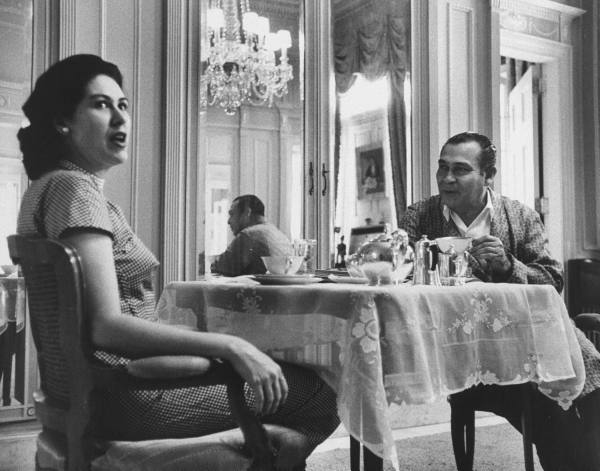
Fernando Dámaso, 28 February 2019 — As a result of the Constituent Assembly and the elaboration and implementation of a new Constitution of the Republic, in an electoral process characterized by legality and tranquility, Fulgencio Batista Zaldívar became the sixth president, a man who had left the army with the rank of colonel (in February 1942, the new Organic Law of the Army grants him the rank of general retroactively), and fused into this same person the two antagonistic currents during the seven prior years, with losses for both sides and for the Republic: the military and the civilian.
Although he was a military caudillo, and had acted as such in previous years, exerting his influence in the rise and fall of several presidents, his personality also projected on the political plane. His rise to the presidency gave continuity to the Generals-Presidents of the Republic. Perhaps, because of this, he was able to easily defeat the military coup of the Chief of Police, General Jose Eleuterio Pedraza, at the beginning of his term. He exercised power from October 10, 1940 until October 10, 1944.
The main objective of his government, formed by the so-called Socialist Democratic Coalition, was to consolidate the state of peaceful coexistence that had been achieved during the Constitutional Convention, where parties, organizations and political and social groups of different stripes had managed to debate their proposals with civility and reached important results for the good of the Republic. In spite of this, from the beginning of his mandate, he had to face the opposition of the Cuban Revolutionary Party (Authentic), his main opponents and losers of the elections.
Unlike prior presidential terms, which began in 1902, he set in motion the semi-parliamentary regime established by the 1940 Constitution, appointing as its Prime Minister Dr. Carlos Saladrigas, a relevant personality, who managed to establish and maintain correct relations between the Executive and the Legislative branches.
During his exercise of the presidency, Batista created the National Development Commission, with the objective of coordinating and promoting the development of the country, set a gold standard for the issuance of monetary certificates and achieved important advances in labor policy, establishing the Sugar Workers Retirement plan.
In addition, he approved the creation of the National Council of Education and Culture, which achieved good results in the improvement and development of these two important activities, turned over the Calixto García General Hospital and the Limones Central (a sugar mill) to the University of Havana, for their use as learning centers, built the National Archive building, as well as that of the Economic Society of Friends of the Country and established the Order “José María Heredia”, to reward Cuban and foreign personalities in the world of science, letters and the arts.
Upon entering Cuba into the Second World War, he called for national unity, the ABC Party, an ally until that point of the Cuban Revolutionary Party (Authentic), responded favorably and came to collaborate with the government. In the context of the war, important measures were taken, with the aim of avoiding the scarcity of supplies and making the lives of citizens too expensive.
Although the Cuban Revolutionary Party (Authentic) continued in the opposition, it collaborated from the Congress with every act of national defense and with the belligerent attitude that Cuba had assumed. In response to this, the government appointed Engineer Carlos Hevia, an important figure of this party, as President of the ORPA, the Office of Regulating Prices and Supplies.
The President, during the years of his mandate, was able to summon and surround himself with people prepared to successfully carry out his government projects, allowing the country to live a stage of social tranquility and progress, experience that, unfortunately, has been forgotten by the others who suceeded him.
On June 1, 1944, general elections were held, including the candidacies of the Socialist Democratic Coalition, composed of Carlos Saladrigas-Ramón Zaydín, and the Cuban Revolutionary Party (Authentic) by Ramón Grau San Martín-Raúl de Cárdenas.
In an orderly process, honest and with all the guarantees, Dr. Ramón Grau San Martín obtained the victory, as the Republican Party of Dr. Guillermo Alonso Pujol joined his ranks, with the goal of, at the last minute, softening the excessive radicalism of some authentic leaders, among them, mainly, Dr. Eduardo R. Chibás, that affected the intention of voters. The transfer of powers was carried out in the most perfect democratic order.
Fulgencio Batista Zaldívar was the first President elected in democratic general elections, in accordance with the new Constitution of the Republic, after the fall of the government of General Gerardo Machado. His presidential term was characterized by the achievement of peaceful coexistence among Cubans, and the realization of important works, both material and social, which helped the country’s development after the impasse of seven years of political and economic instability. By restoring the democratic order, he created the base for its continuity.
The facts show that Batista was not the illiterate politician that they tried to make us believe, but someone intelligent who made good government during this presidential period. No monument or bust was erected that would honor him, although during his presidential termt the 4th of September flag fluttered next to the Cuban flag in the military camps and institutions.
Translated by Wilfredo Díaz Echevarria
